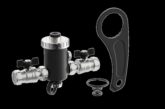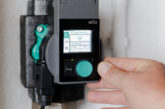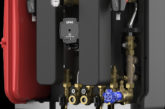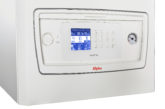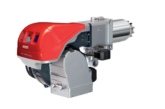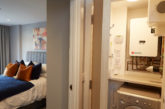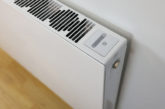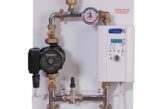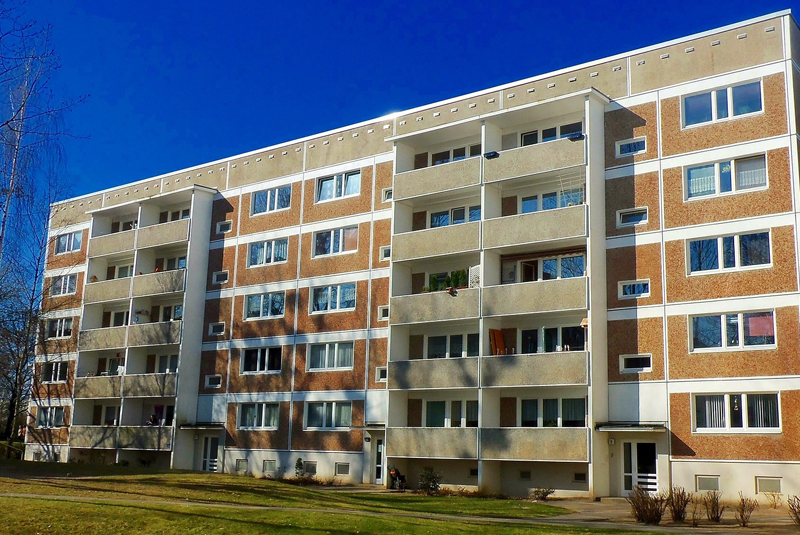
Combi boilers are not the panacea, says Rob Berridge.
Most that endure my little forays into writing about our industry know that I’m not a particularly huge fan of combi boilers. Sure, they have a place in our ever smaller rabbit hutches that we are ‘judiciously’ duped into thinking are homes – but it needs to be said that just because they are often the cheapest and most convenient option, they are very, very far from the best or most efficient and often installed with little thought to the system they are incorporated into! For example:
From fairly modern Edwardian and Victorian times (they certainly built better quality back in the day, eh?) we have built large communal housing projects and indeed converted many large older houses into communal housing, flats and apartments. We still see very old plumbing systems within this housing stock that also, in their day, would generally still be far superior to what we now unfortunately see on a regular basis.
Many were refurbished but also new blocks were built in the 50s and 60s and these systems generally worked on a high level storage tank room (in loft space or on roof) and served low pressure water supplies to each dwelling for bathing. An additional, smaller ‘drinking water’ supply from the mains was fed into each property on a common riser and also supplied the storage tanks. Many of these tanks also had a communal water softener installed upstream for the benefit of all users and their systems. These systems worked great and, because of the large communal demand, any possible water borne, bacterial growth was kept to an absolute minimum or completely negated. Also, pretty much everyone (apart from the top floor) would have excellent gravity flow rates through their correctly sized pipework and storage with little or no velocity noise.
Drinking water (mains) circuits in these vast and high rise properties were not designed for the total water demand of each apartment but the unscrupulous or extremely unprofessional installer/company took it upon themselves to link ‘cheap fix’ combis onto these circuits, probably as a result of poor training/advice or simply ignorance – and completely incorrectly capped off the original, low pressure supplies within each apartment. This has caused some huge health problems as I will try to explain.
Leaving, ‘dead legs’ on a system is a category 3 risk! I would argue it should be higher as time can make the risk more dangerous to health, especially in communal environments – and yet no enforcement, punishment or it seems even awareness of the danger of creating it exists. Not only this, but the poor guys left using the excellent, originally designed systems are now being fed with contaminated water as it is not getting used in the volumes as it was designed to do, sitting and stagnating for many days in some cases.
In my new role as a design consultant (bit posh, really), I get invited to inspect and report on many of these types of buildings and can assure you that this problem is unfortunately at epidemic proportions. Whilst it is true that estate management services are legally obliged to have communal stored water tanks regularly tested and sanitised, it simply is not being done and there is absolutely no management record in these buildings as to who draws from which water supply system or a record of boiler upgrades etc.
Water companies will also now only guarantee 0.7bar to the boundary of a property or estate, and that is at ground level! I witnessed a fourth floor, two-bed flat with brand new 30kW combi only last week that had 0.1bar at the hot water outlet! Imagine that. And yep, it was signed off by a GSR and not registered with the estate management.
So what are we doing wrong? A combi boiler is just a heat only boiler with a built in instantaneous water heater. This hot water does not need to be mains fed, it only requires (if correctly sized) to have a matching flow rate to its manufacturer’s stated output. I am sorry but I even dispute those figures! It is widely recognised within plumbing engineering that 1m/s is the recommended flow rate through any size of pipe to limit velocity noise and possible velocity caused component failures. Some say 2m/s on potable water but heating is absolutely 1 m/s. At 60°C and 1 m/s on 15mm pipe (this is what serves the majority of combi boilers), this equates to 8.7l/m for standard table X copper. Even if we allow a whopping 2m/s, we still only get approximately 17.5l/m. Why are we then getting some manufacturers spouting flow rates of up to 35l/m and 40 or even 50kW combis launched into the market? Yep, I cannot fathom out the answer either!
I digress: The excellent guys at Stuart Turner supply many solutions to this problem but for me the Monsoon single impeller, universal (negative head in old money) range of pumps truly fits the bill for the majority of these communal service scenarios. They can also work well on communal softened water supplies, which is great for the longevity of such boilers, systems and bathrooms (all subject to survey, obviously).
Of course, I believe that a regulating valve set to a maximum of 15l/m should be installed between these pumps (or indeed mains supplies) and the combi boilers to ensure an optimum flow rate, but we should also downsize these huge boilers to properly suit the flow rates. 15l/m at 60°C is unusable anyway and we need to blend it back down to 38°C if we want to bathe in it, surely? Just by this blending, it would increase our mixed flow rate exponentially.
My message is simple: Don’t be fooled into thinking that a combi boiler must run on mains fed water. It does not! Be aware that these installations come with huge responsibility to ALL of the end users in communal dwellings. And finally, ‘#BeaPro’ and think outside the box on the best and safest solutions.


